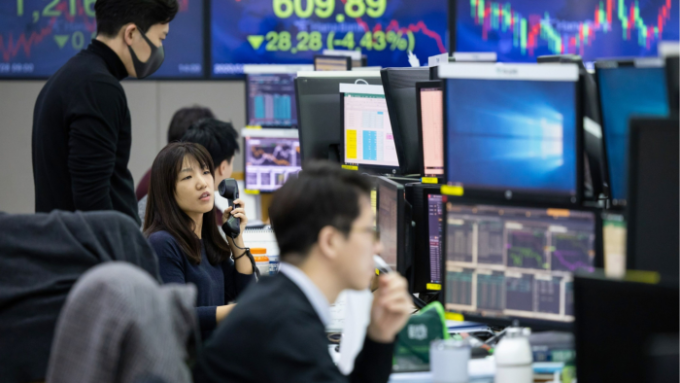Stark differences revealed under the bonnet of clean energy ETFs

Simply sign up to the Exchange traded funds myFT Digest -- delivered directly to your inbox.
Latest news on ETFs
Visit our ETF Hub to find out more and to explore our in-depth data and comparison tools
The invasion of Ukraine, surging oil prices and devastating evidence of climate change are likely to have helped contribute to the sustained demand for clean energy funds this year, even as broader environmental, social and governance (ESG) portfolios have seen their popularity ebb amid the wider sell-off in growth stocks.
That is despite some mixed short-term performance: most of the broad clean energy funds discussed in this piece are slightly down or flat for the year to August 11 if we look at local currency returns, although the strength of the US dollar has translated into some big gains for sterling investors in many cases. It is only the Invesco Global Clean Energy Ucits ETF (GCLX) that is still notably down over the period in sterling terms.
The iShares Global Clean Energy Ucits ETF (INRG) has made substantial gains in both local and sterling terms over the period.
Recent progress made by US legislation that would provide $369bn (£306bn) for climate and clean energy programmes could usher in a brighter outlook for the sector. However, understanding how clean energy portfolios work and what the best option might be remains a challenge. Several clean energy ETFs now compete with the iShares fund for investor cash, but their similar-sounding names hide some important differences in approach.
Thematic funds with a focus on niche or nascent sectors often have a difficult balance to strike between the purity of their exposure and their level of diversification and liquidity. A purist approach can involve a concentrated portfolio of companies focused closely on the given theme, many of which tend to be small or mid-cap stocks.
This can make the portfolio more volatile, more dependent on just a few names, and more exposed to liquidity concerns. The iShares fund is a case in point: having taken on huge amounts of money it started having too much influence on the share price of certain smaller, less liquid holdings. That triggered an overhaul of the index it tracks, meaning the fund now has around 100 holdings, versus 30 beforehand, and comes with certain liquidity constraints.
Along with the size of a fund’s biggest positions, this can be one of the key dividing lines between the available clean energy options. If we look at the iShares fund it had 99 holdings on August 9, with the Lyxor MSCI New Energy ESG Filtered Ucits ETF (NRJL) and Invesco Global Clean Energy holding an even larger number of stocks.
The First Trust and L&G funds in the list have notably fewer holdings, but it’s the HAN S&P Global Clean Energy Select HANZero Ucits ETF (ZERP) that is most concentrated by this metric, with just 30 holdings.
Kenneth Lamont, a senior research analyst at Morningstar, noted that while the HAN ETF fund and the iShares fund both weight holdings based on their exposure to clean energy revenue, they differ notably in other ways.
“While the HAN fund will only select those stocks with clearest revenue exposure to clean energy activities, the iShares fund casts its net wider and invests in a longer tail of companies with less direct revenue exposure to clean energy,” Lamont said. Both names have big allocations to utility companies according to Bloomberg data. They also have chunky allocations to the information technology and industrials sectors.
The iShares fund is still a pretty concentrated play on a few stocks even after last year’s overhaul. The fund’s top 10 holdings still represent around half of the portfolio thanks to some chunky position sizes — such as an almost 10 per cent allocation to Enphase Energy, weightings of more than 6 per cent in SolarEdge Technologies and Vestas Wind Systems and slightly smaller allocations to Plug Power and Consolidated Edison.
That concentration might explain why the fund leads the pack by six-month and one-year total returns — and why it has a relatively low correlation to the S&P 500 over the past year of 0.59, where a perfect correlation is 1.
The First Trust Nasdaq Clean Edge Green Energy Ucits ETF (QCLN) and HAN ETF funds also have big allocations to their top 10 holdings and share some top holdings such as Enphase. But it’s notable that the Invesco and L&G funds are much more diversified by this measure, lessening their stock-specific risk as well as the uplifts that could come from certain prominent names performing strongly. These two also had the highest correlation to the S&P 500.
AJ Bell head of investment research Alena Kosava noted that these portfolios, like many thematic offerings, will come with some notable style bias.
“Investors need to be mindful of stock characteristics within the universe — these tend to be mid-cap businesses with a growth bias,” she said.
“Indeed, all funds referenced on the list have a mid-cap bias and are growth-orientated strategies. The L&G ETF is the only strategy which is more balanced from the stylistic point of view, whilst exhibiting a mid-cap bias in terms of its cap exposure.”
Another big issue relates to whether the fund’s index weights holdings by market capitalisation or instead gives a roughly equal weighting to its positions, effectively putting greater emphasis on small and mid-cap stocks. The L&G and Invesco funds both take an equal weight approach — something that divides opinion among fund analysts.
Lamont highlighted the fact that this approach can create liquidity issues — as seen with the iShares ETF, a large fund can end up owning too much of a smaller company and move its valuation by sheer weight of money alone. Bloomberg data shows that the median market cap of a holding comes to around $3bn in the Invesco fund and $4.5bn in the L&G fund, compared with more than $14bn for the iShares option.
But some providers mitigate this: Lamont noted that liquidity constraints on the L&G fund mean less liquid stocks have a smaller allocation in its portfolio.
On top of this, some simply view equally weighted products as a better play on niche and still immature industries. Goncalo Machado, investment manager at InvestEngine, a platform focused on ETFs, said: “You could argue equal weighted is more efficient because there’s no obvious leader yet so it’s more balanced. These are still somewhat developing names that could catapult quite quickly.”
*Investors Chronicle is a 160-year-old publication owned by the Financial Times offering an expert and independent view of the investment market. It provides educational features, investment commentary, actionable tips and personal finance coverage. To find out more, visit investorschronicle.co.uk
Latest news on ETFs
Visit our ETF Hub to find out more and to explore our in-depth data and comparison tools

Comments